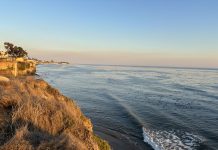Promotions ManagerUniversity of California Santa Barbara offers a wide range of classes that likely extend beyond what many are used to. Issues such as whether a class fulfills a GE requirement or how difficult the professor might be are essential to consider. To help the class of 2016 get started, compiled here is an overview of recommended classes to take during your first year at UCSB.
1. World Music (MUS17): Like most classes in the music department, this one counts toward the Area F requirement; however, it is unique compared to other classes in that you don’t necessarily need a musical background to do well. MUS17 is an introductory course to a subject called ‘ethnomusicology,’ which can be thought of as a combination between the two disciplines of music and cultural anthropology. If you have any interest in either music, world culture or both, then you’re almost bound to find the class interesting. From personal experience, I can attest that while you do have to put in some effort to do well, both the professor and the content make it very worthwhile. Ethnomusicology is Professor Marcus’ specialty, and his enthusiasm for the subject comes through in his teaching. MUS17 is a great way to broaden your cultural and musical perspective, and one of the most enjoyable classes I’ve taken at UCSB.
2. American Government & Politics (POL S12): Like many other classes in the humanities, this one counts toward the Area D requirement. The name of the class basically sums it up: it covers political history, our constitutional rights and the current structure of our government. I took it last fall as a freshman, and found it interesting and relevant because it made me learn a lot more about the way the United States’ government functions, and how it is relevant to us as voters. Although it helps to have a prior interest in politics, the class is applicable to anyone because it focuses so much on political events, and is a great way to become more informed. There is a fair amount of reading, but it’s nothing unreasonable, and it helps that the material is, for the most part, engaging.
3. Introduction to Literary Studies (ENGL10): This class is a prerequisite for English majors and a way to get the A2 requirement out of the way for everyone else. An important note: it does matter which professor you have, since their teaching styles are very different. Students describe Griffin as fairly easy to follow, while Waid has a reputation for being unstructured with her lectures. If you like reading and critical analysis, though, this is definitely a good class to take. The course focuses on acquainting students with a wide variety of literary terms, and focuses on literature, including essays, short stories, plays and novels. I found that the most important thing is to keep up with the readings, since they are the core of the course. One student, second-year art and art history major Mariah Min, gave her input on the class.
“English 10 is a great class that exposes you to a lot of different types of literature that you might otherwise ignore. It also includes more contemporary writing, instead of all the ‘classics’ like in high school,” she said.
If you’re already interested in this subject, then this class is undoubtedly an excellent one—if not, it could be the thing that makes you appreciate and enjoy reading and literary analysis.













Comments are closed.